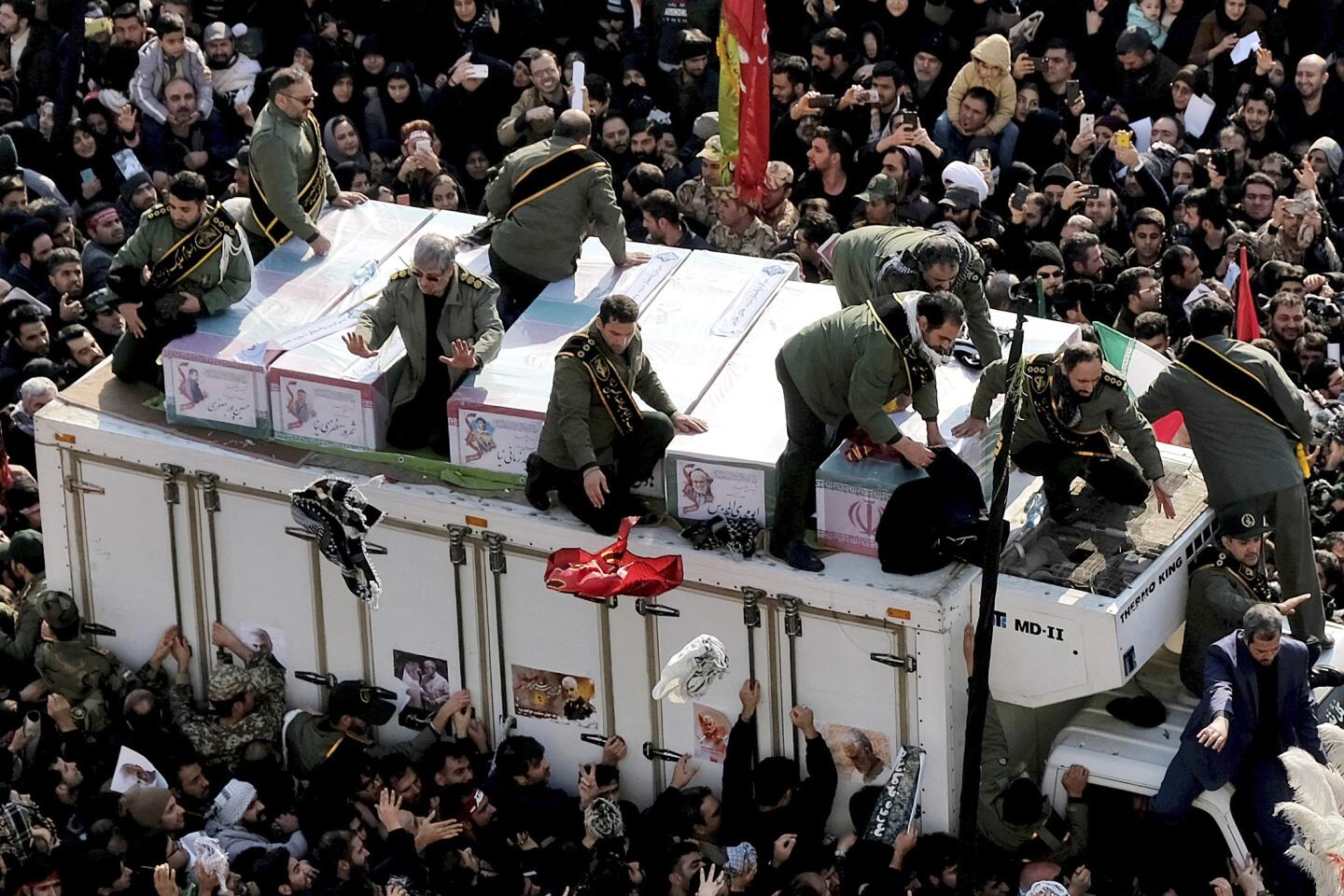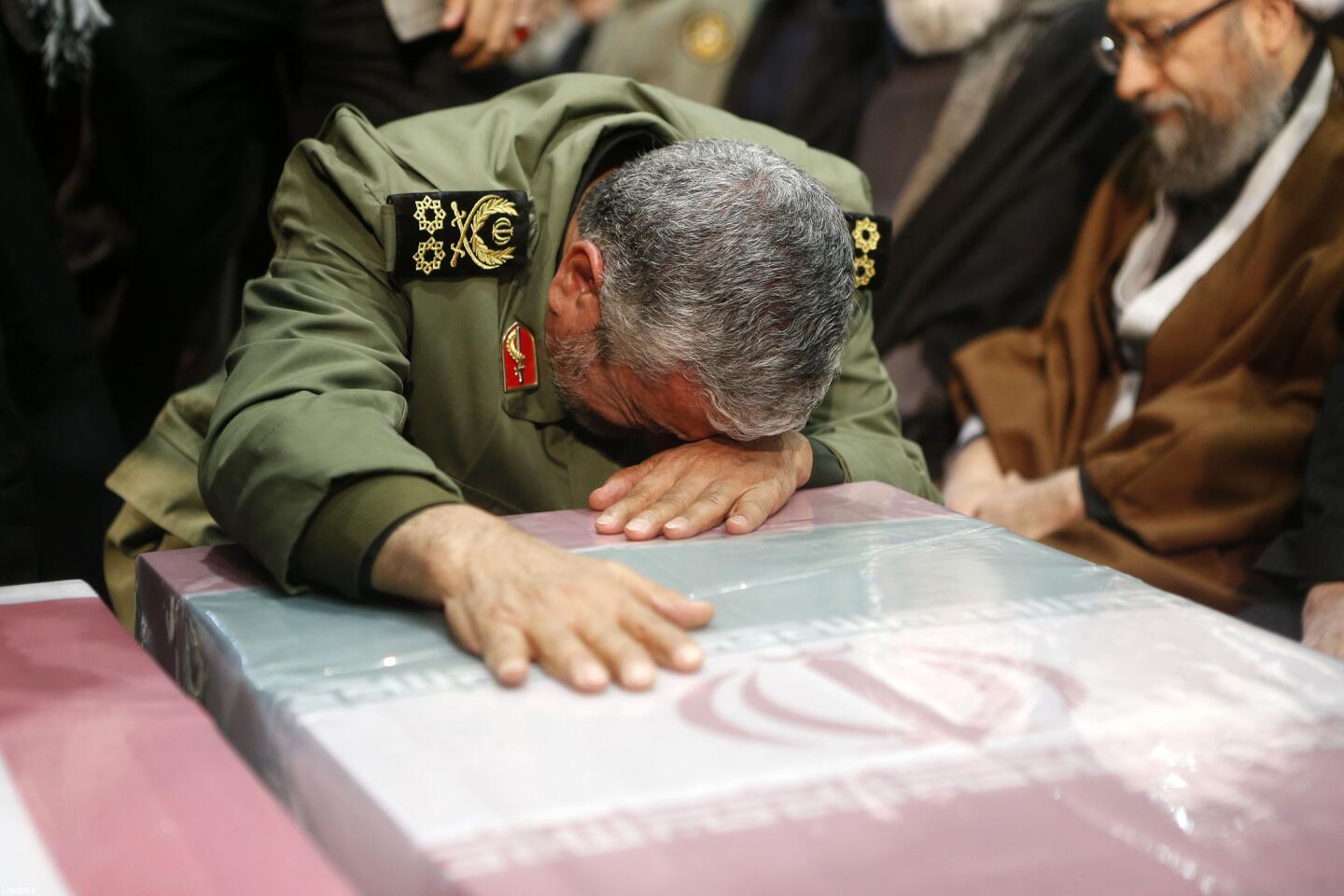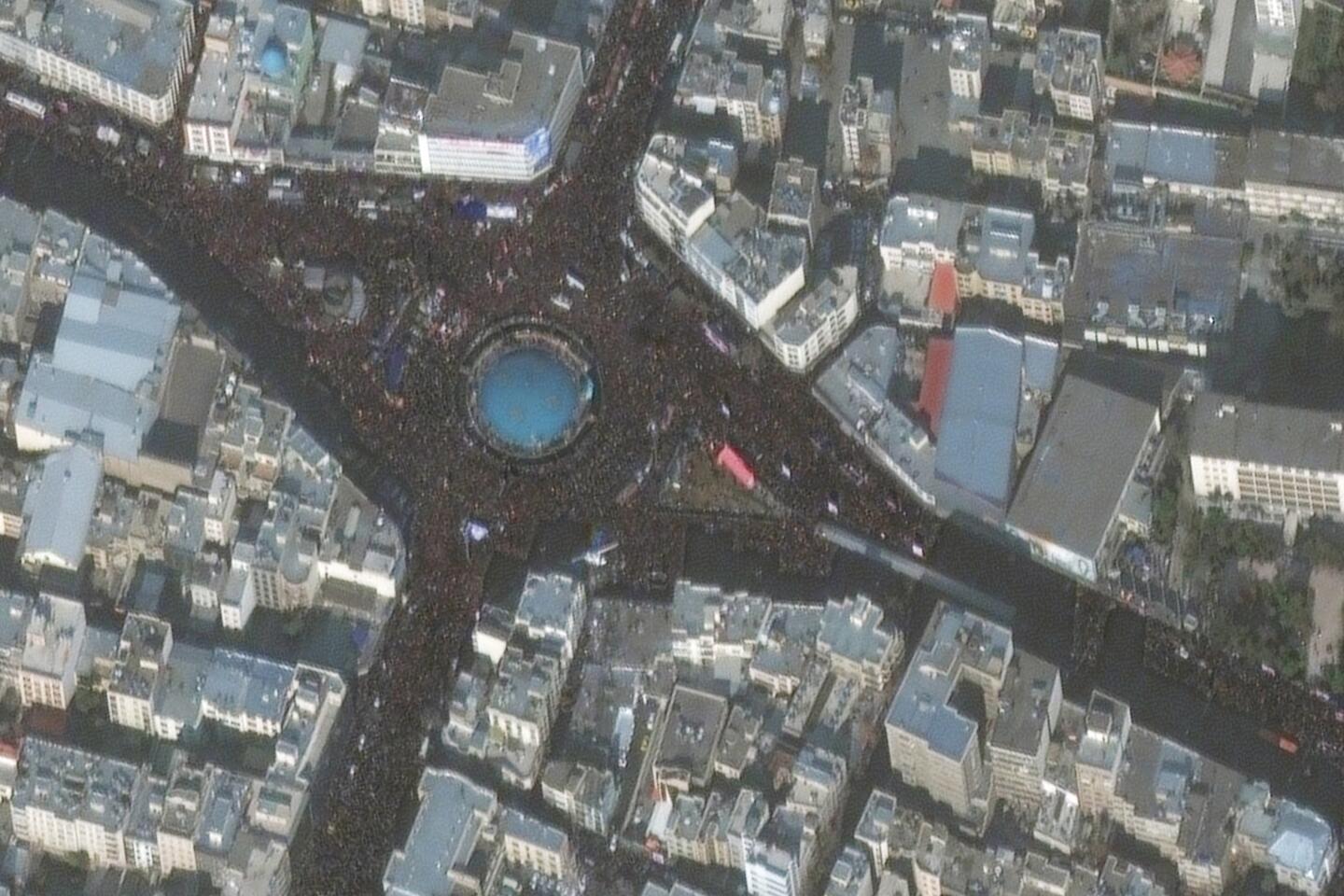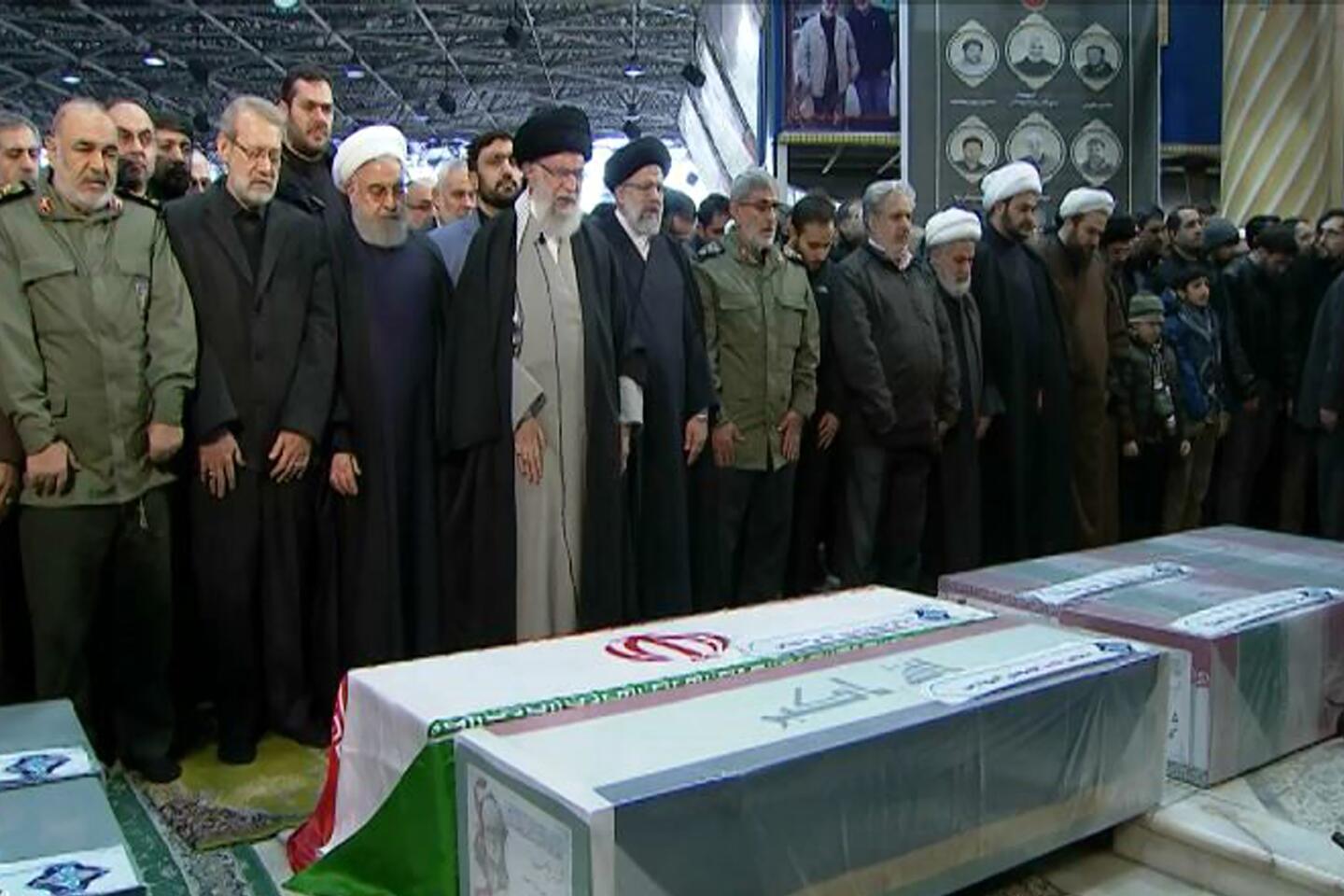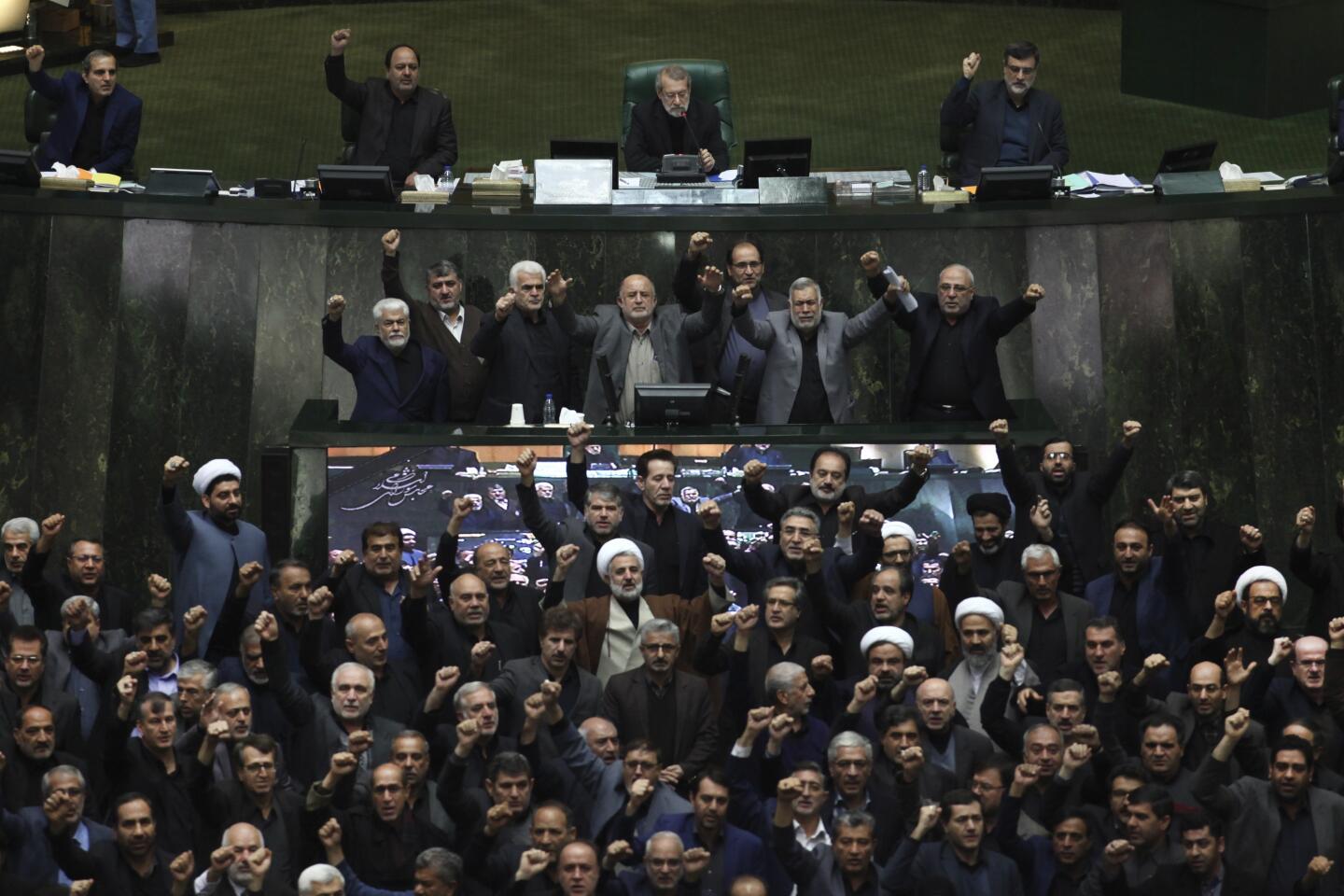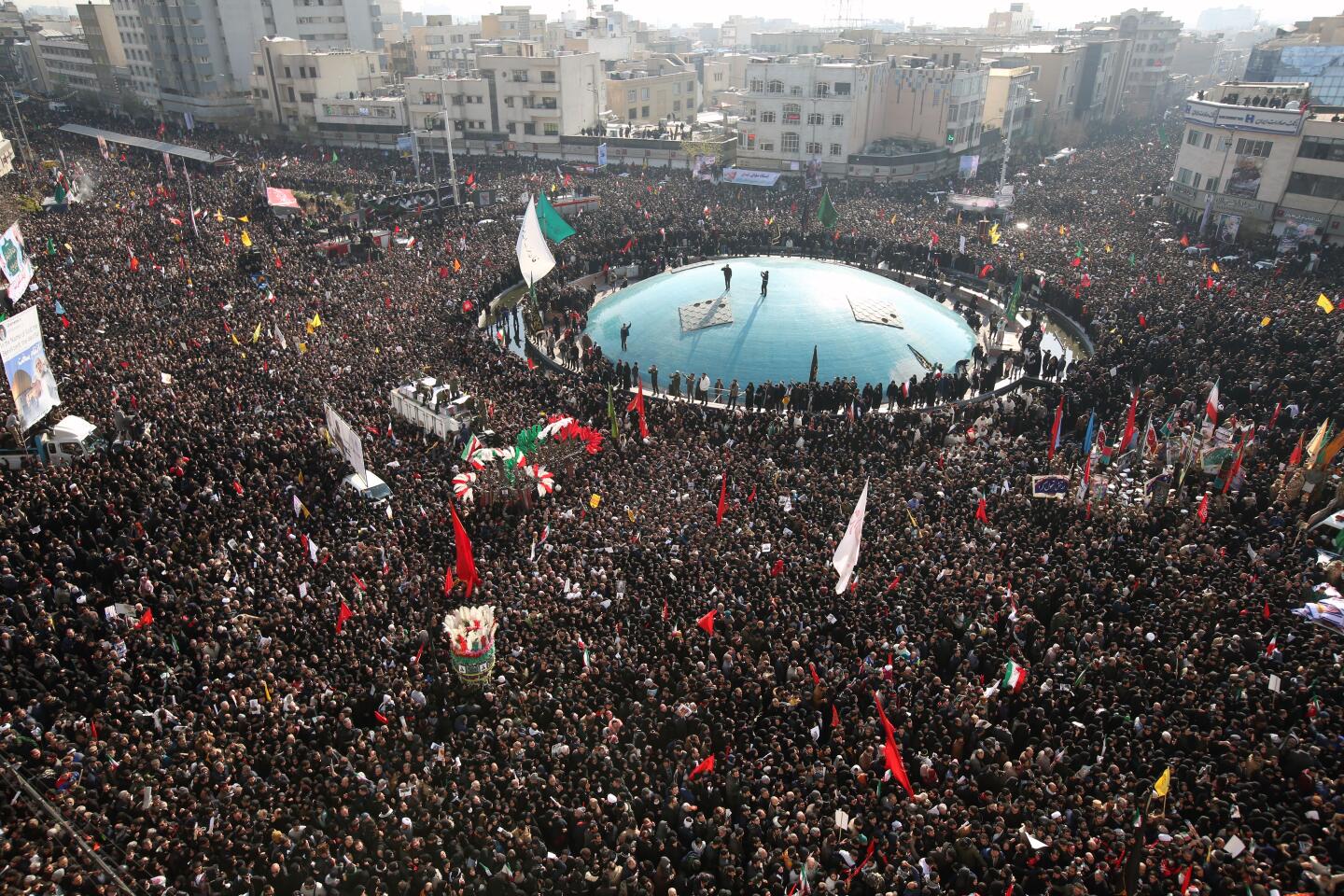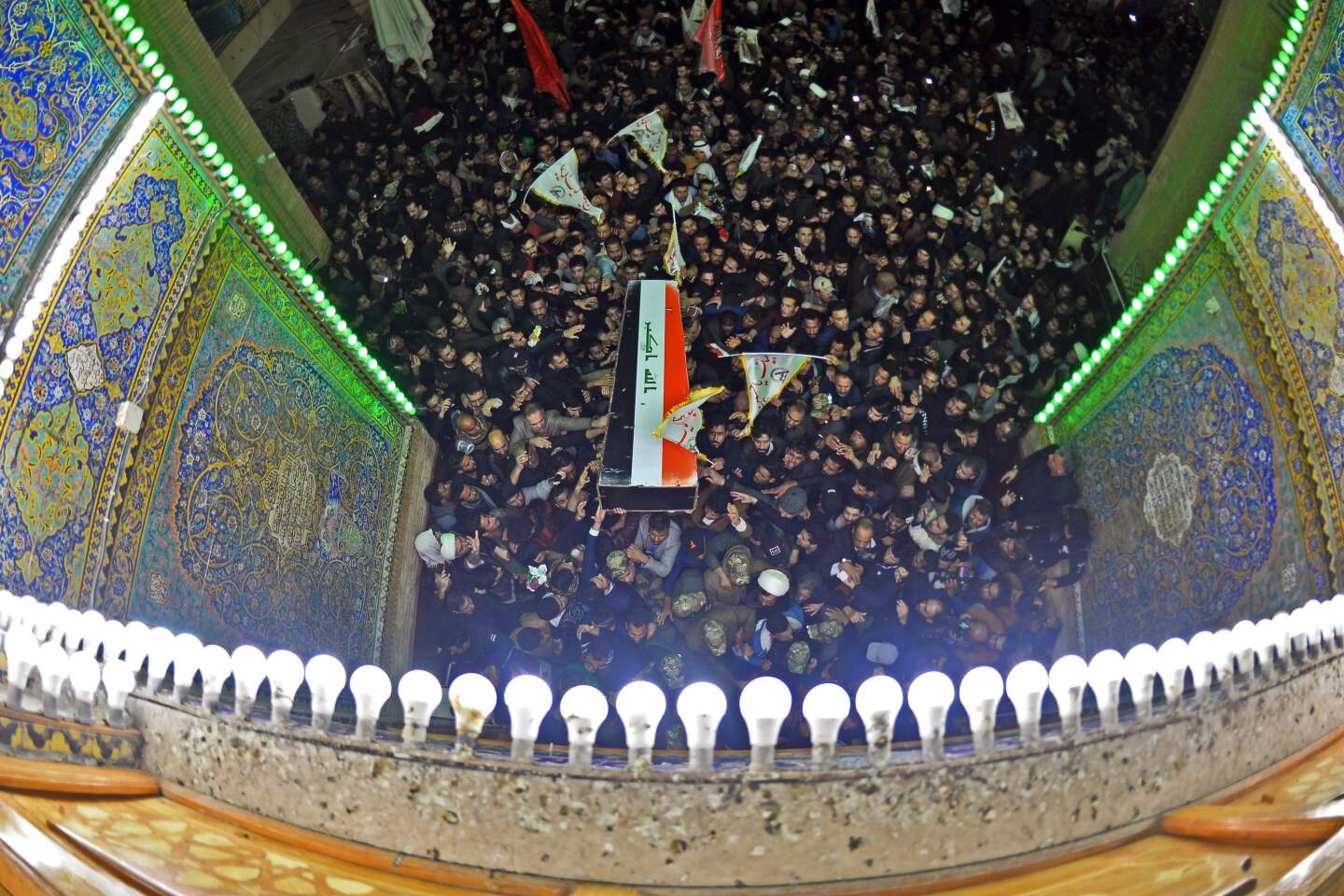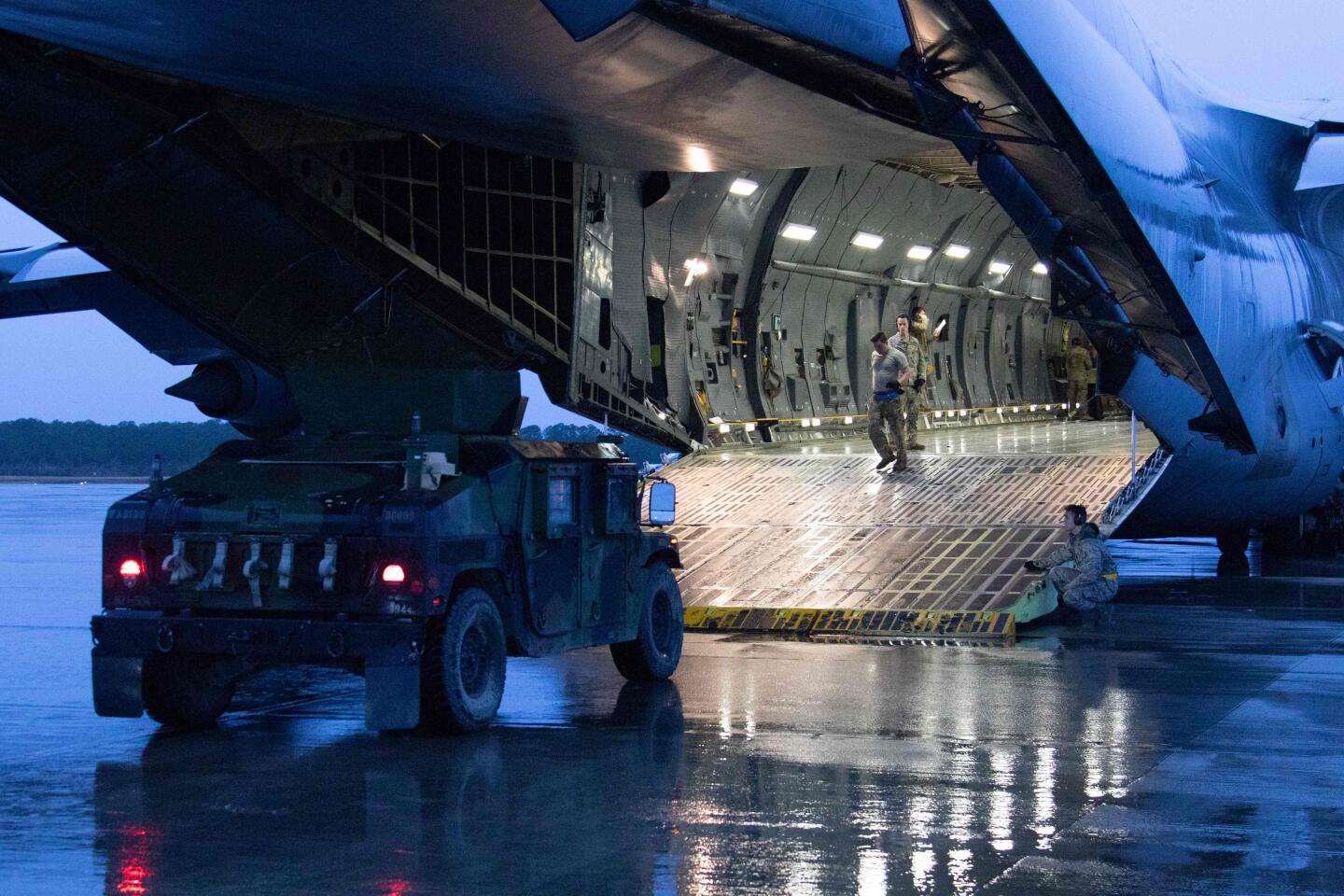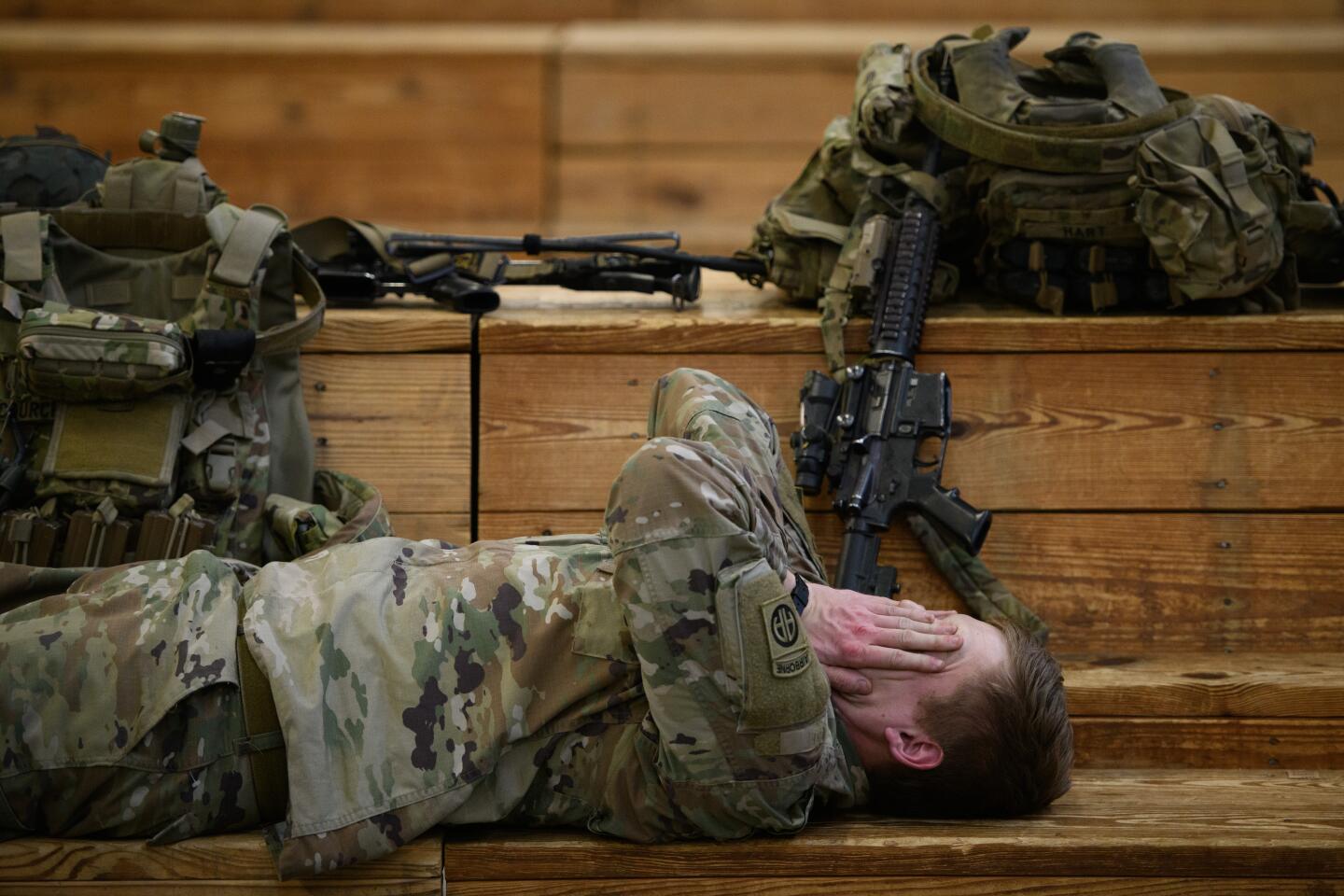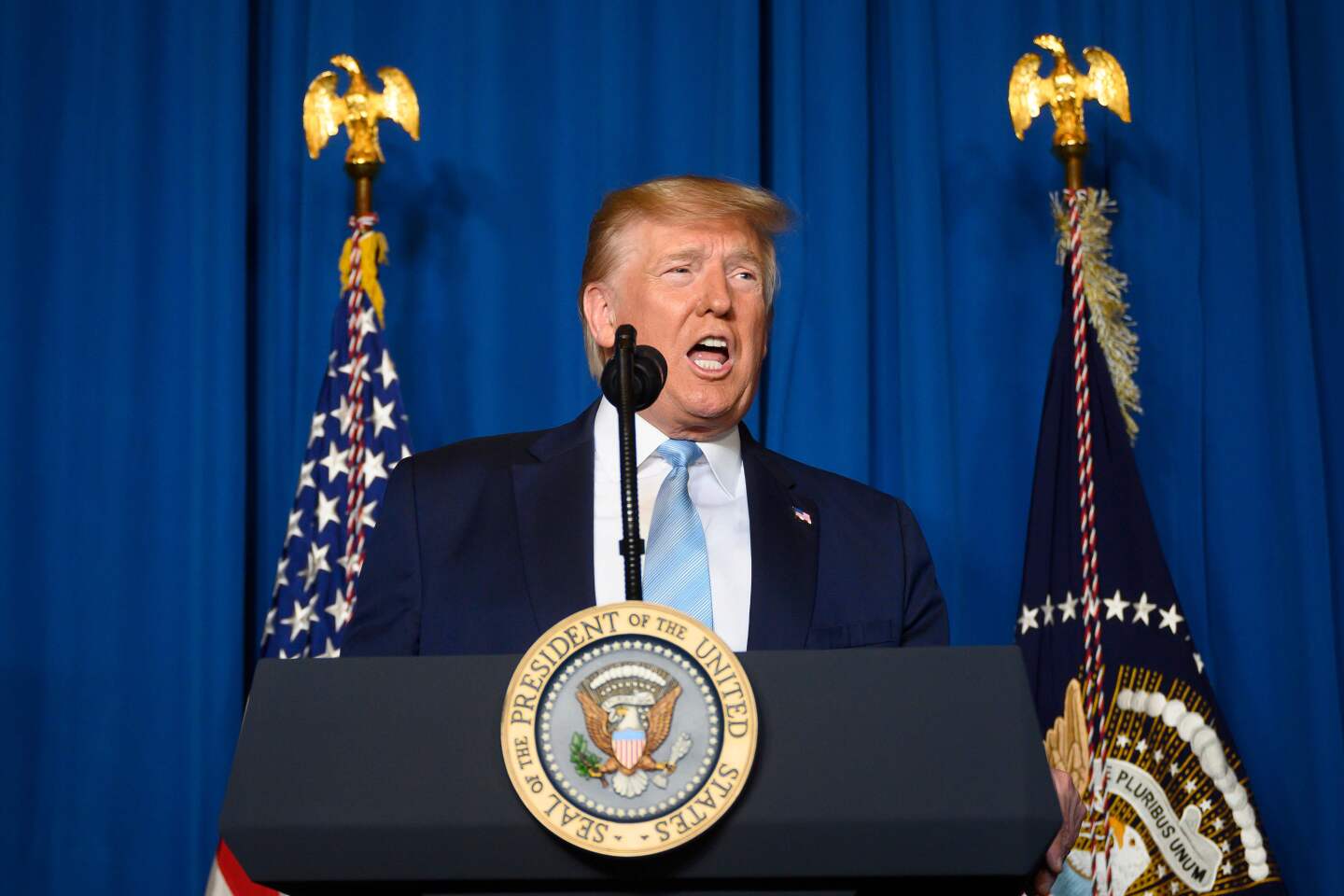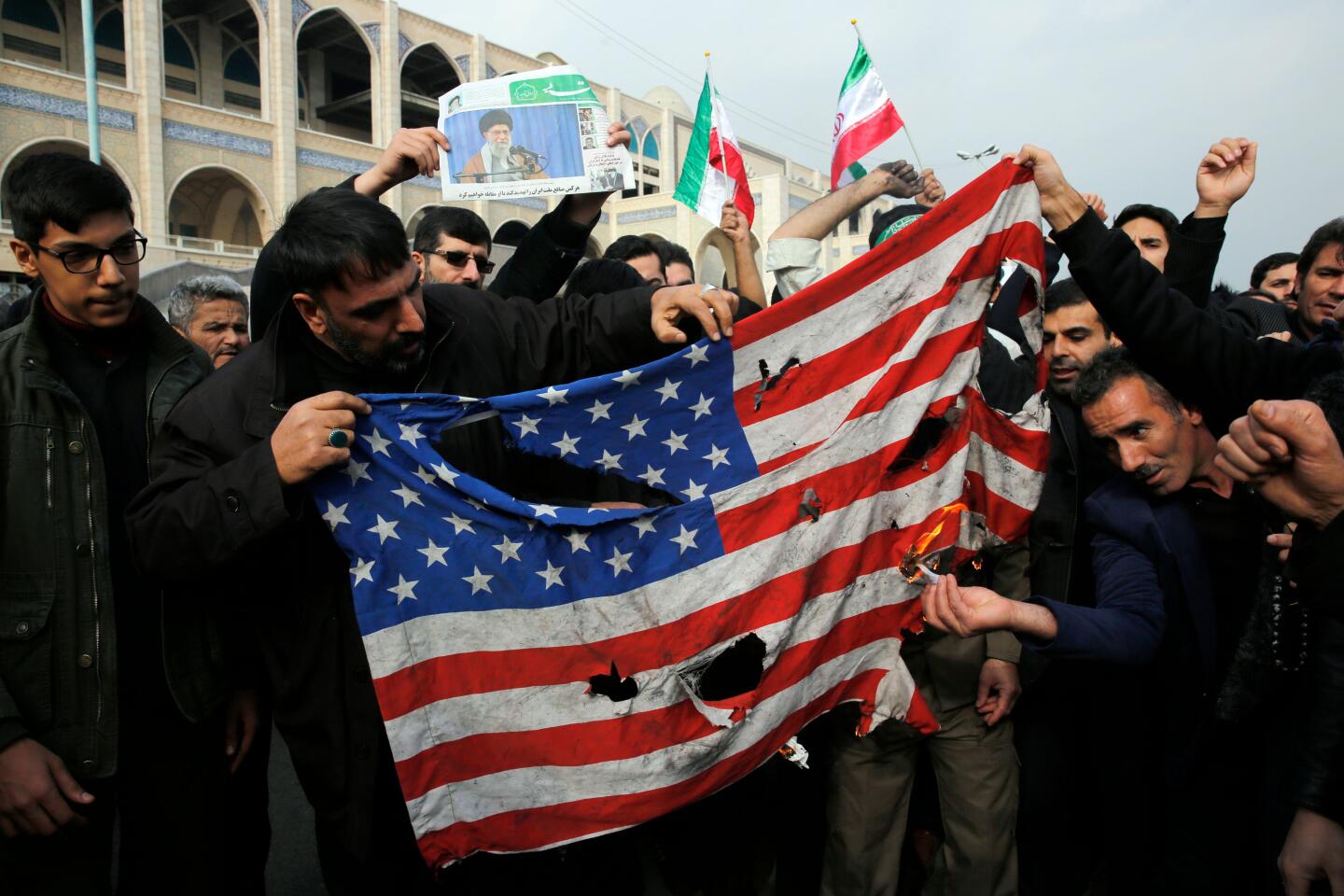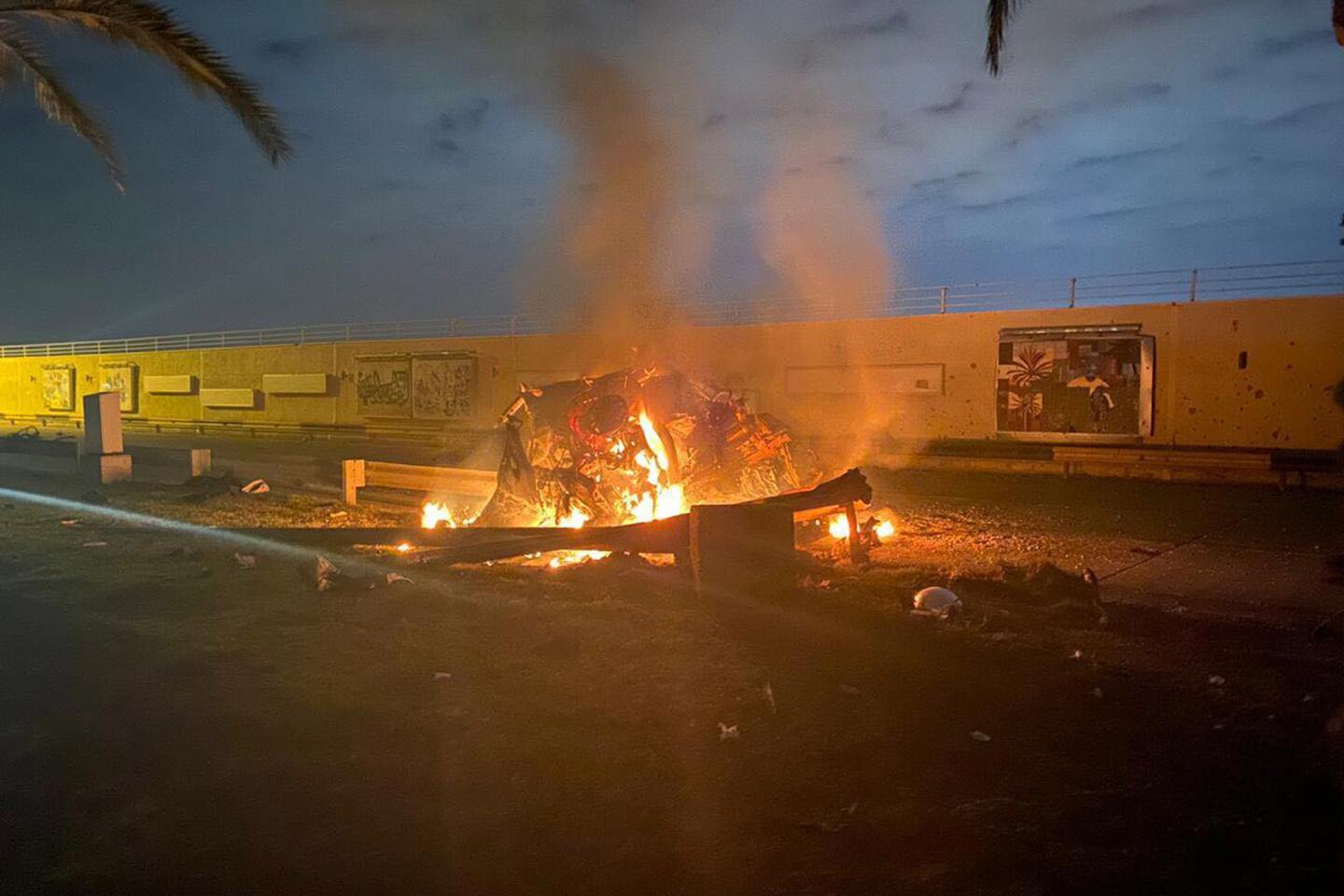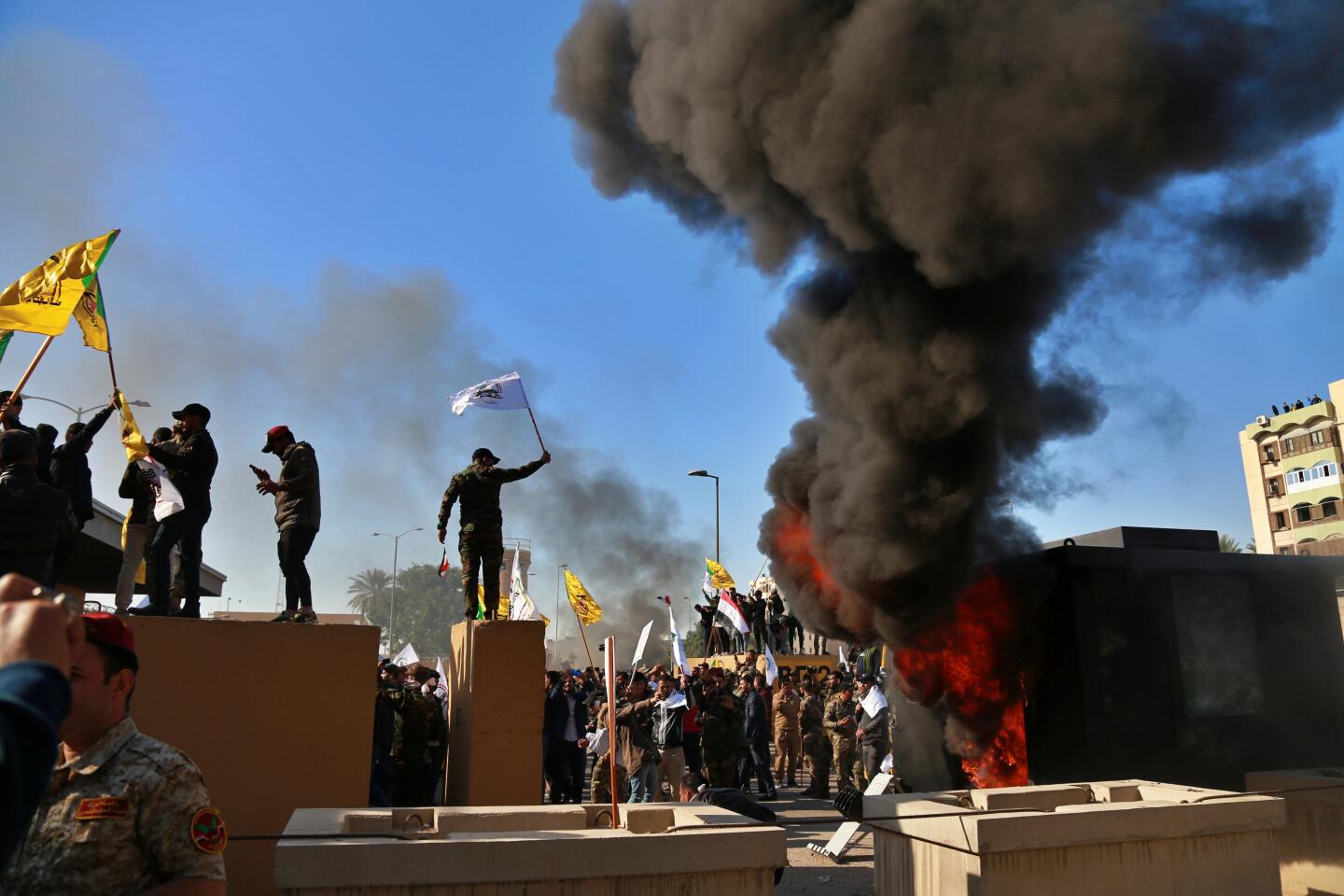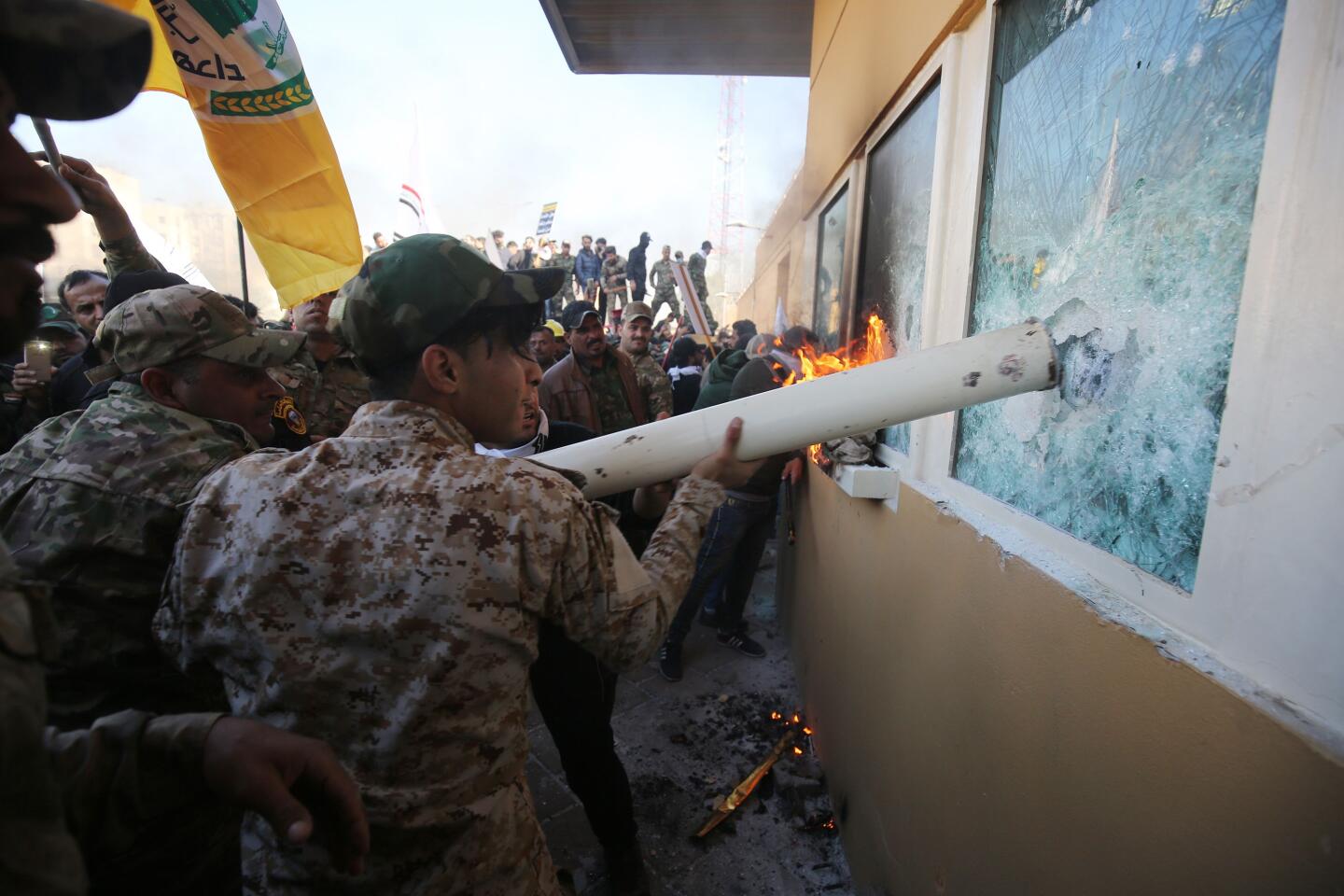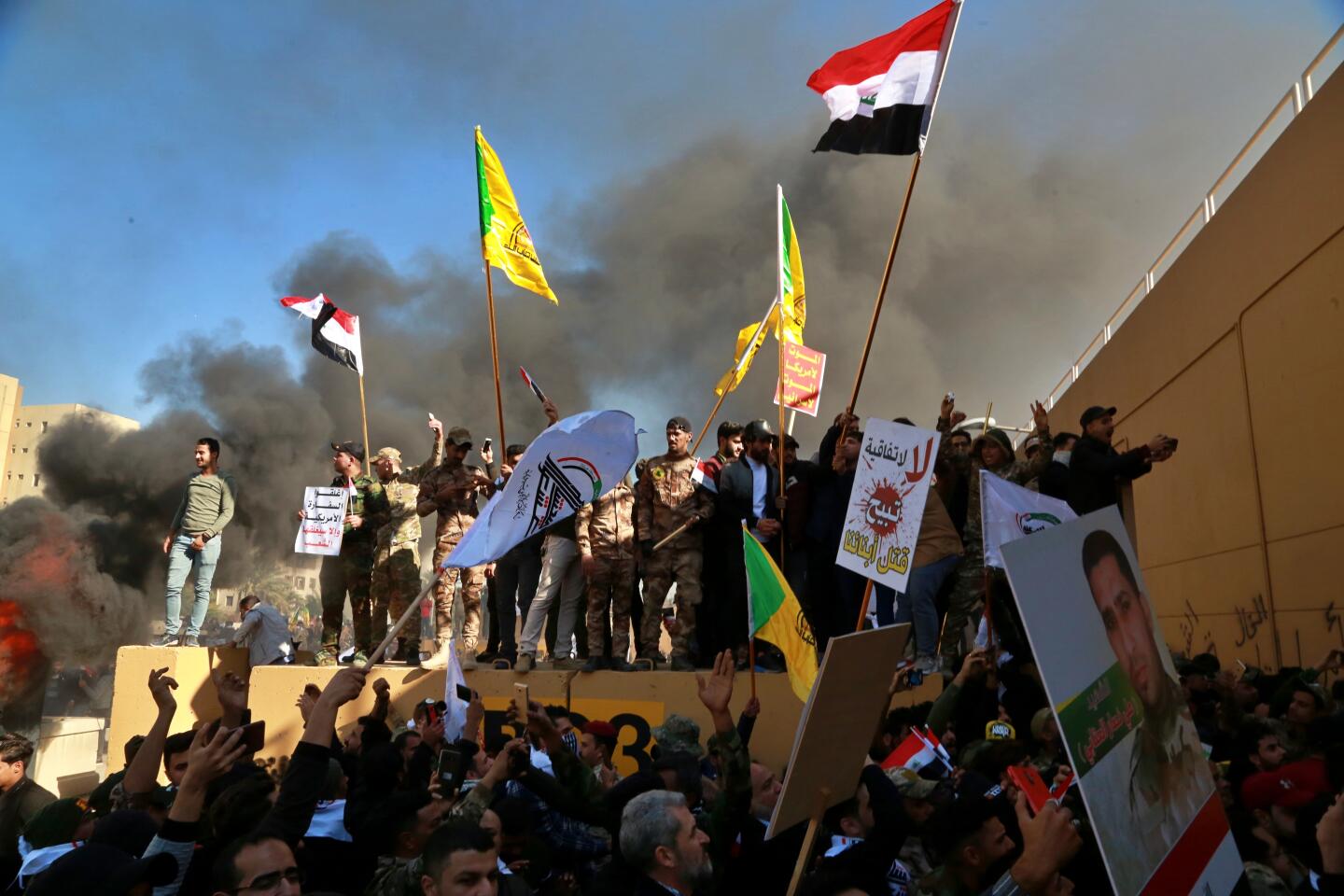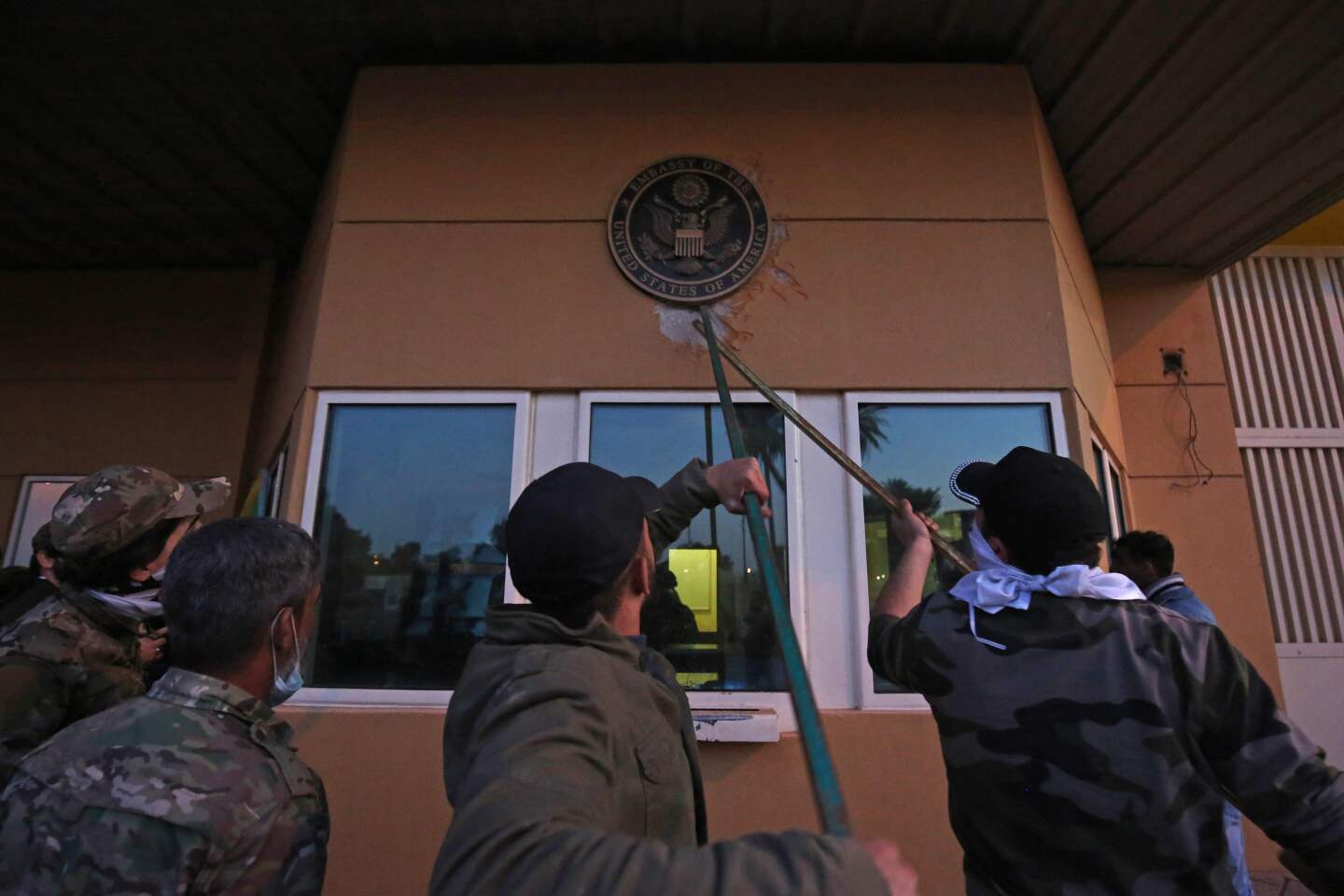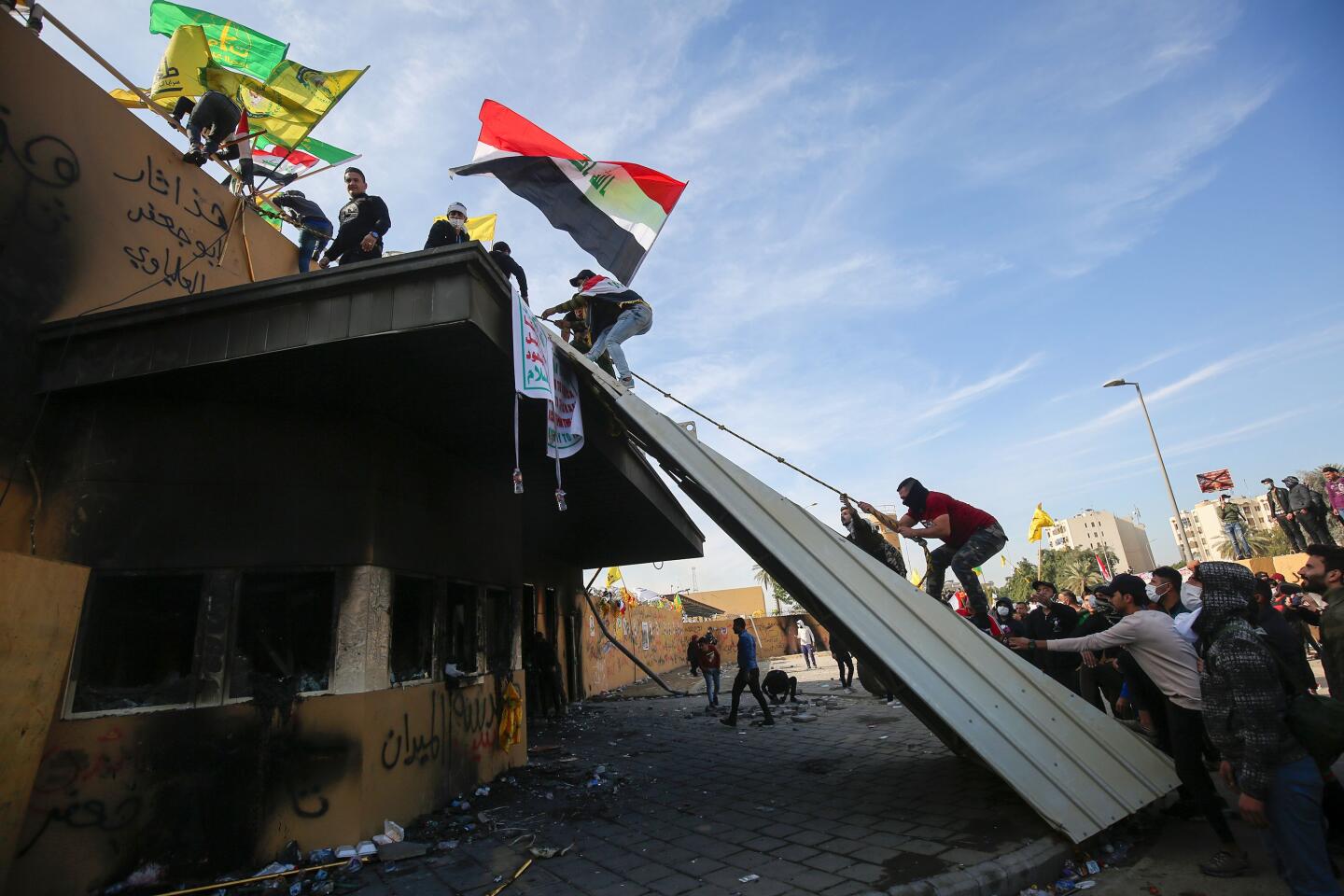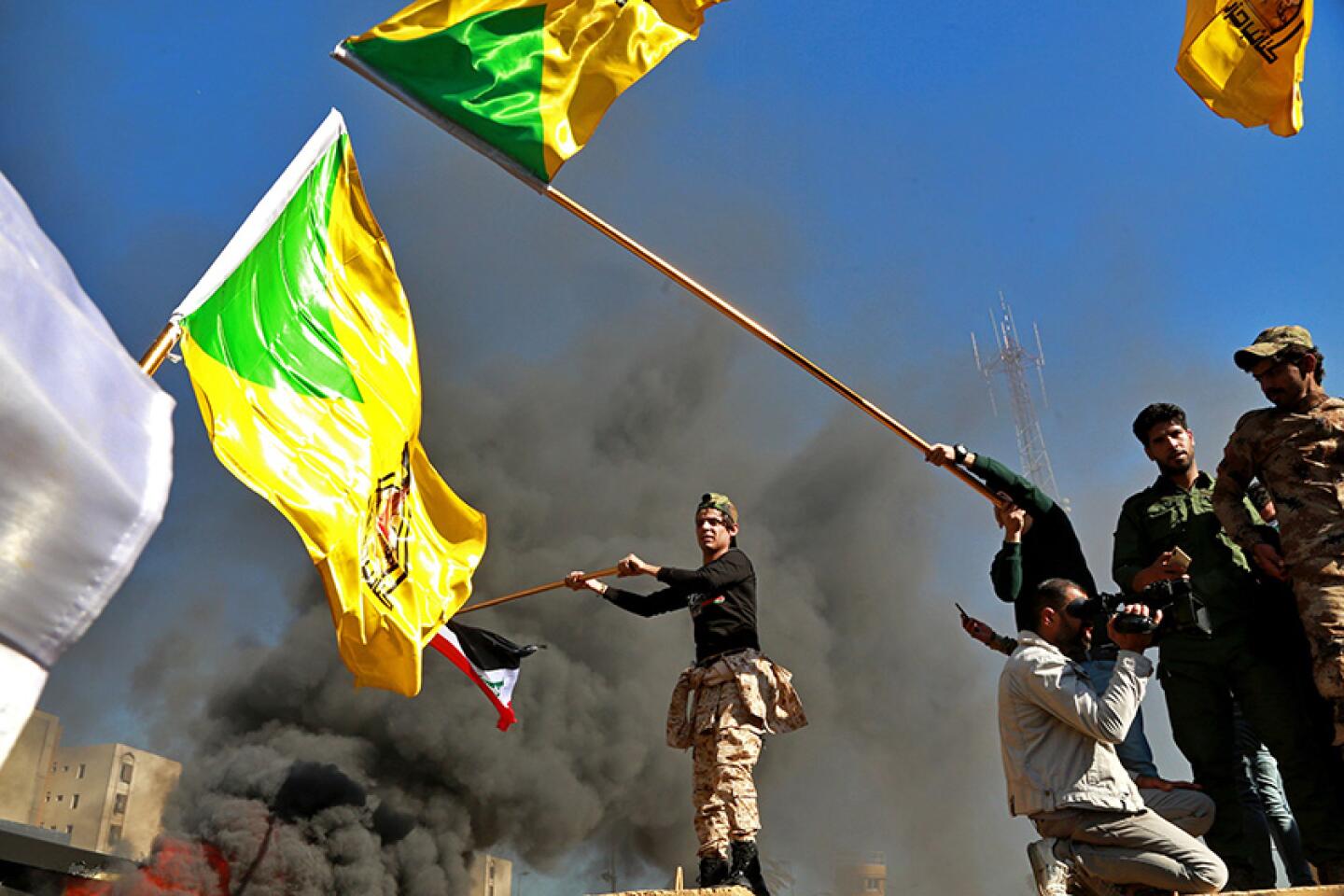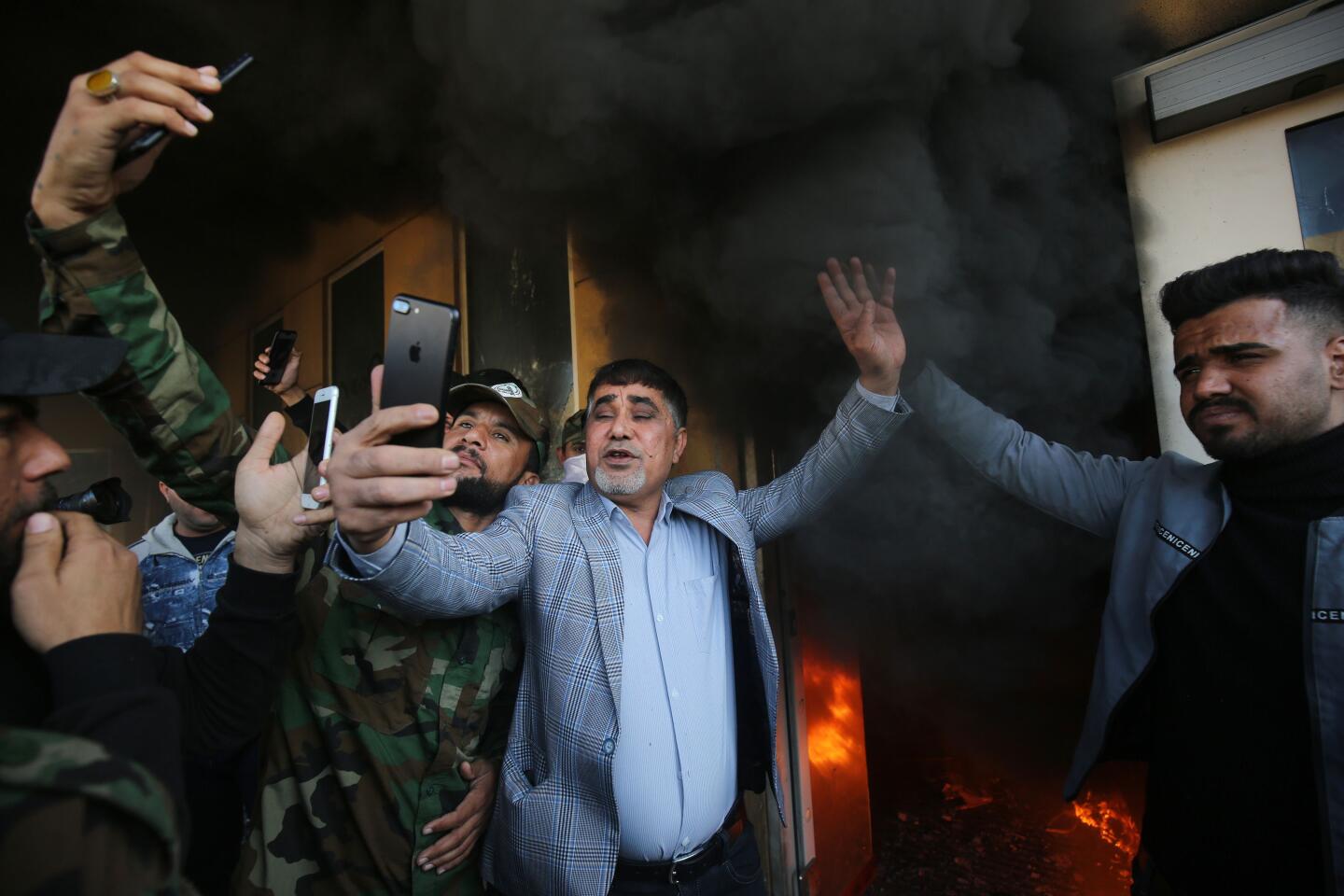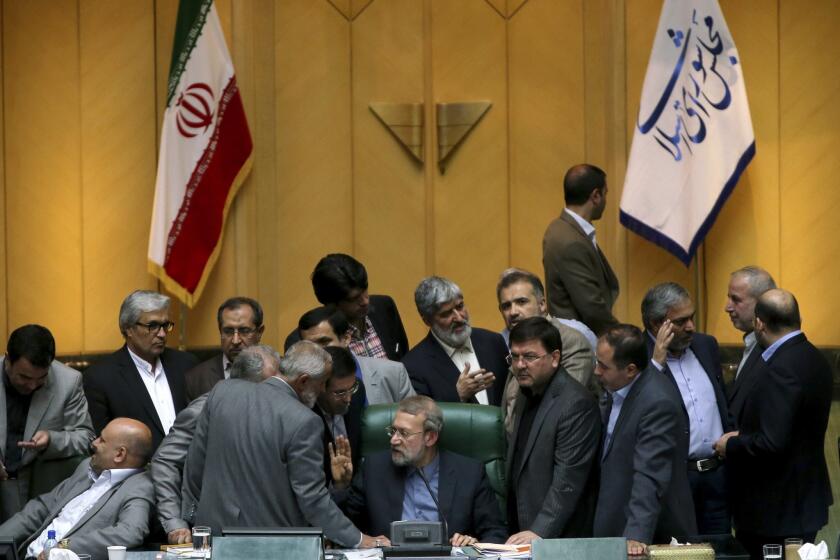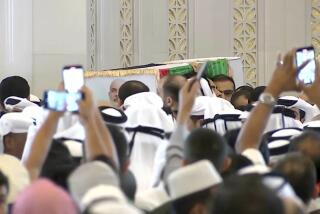Tears from Iran’s supreme leader as massive crowds attend slain commander’s funeral
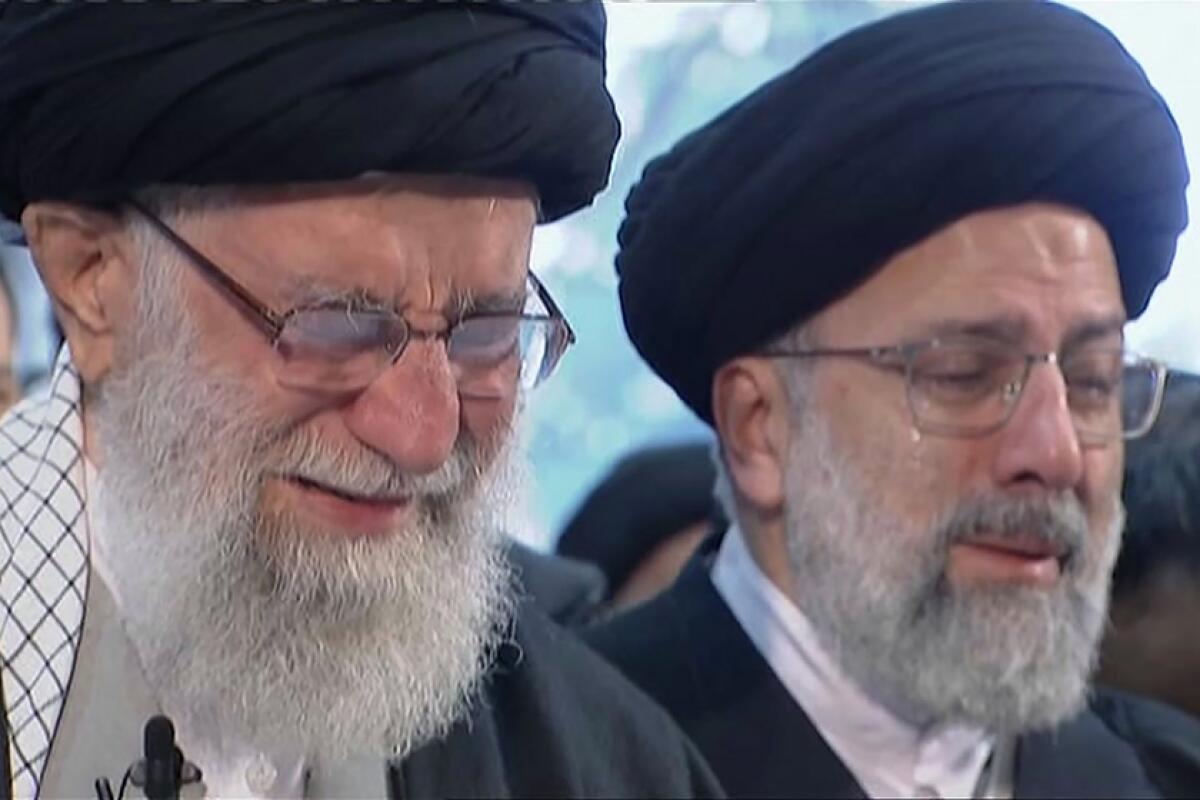
- Share via
TEHRAN — Iran’s supreme leader wept Monday over the casket of a top general killed in a U.S. airstrike in Baghdad, his prayers joining the wails of mourners who flooded the streets of Tehran demanding retaliation against America for a slaying that’s drastically raised tensions across the Middle East.
The funeral for Revolutionary Guard Gen. Qassem Suleimani drew a crowd said by police to be in the millions in the Iranian capital, filling thoroughfares and side streets as far as the eye could see. Although there was no independent estimate, aerial footage and Associated Press journalists suggested a turnout of at least 1 million, and the throngs were even visible on satellite images of Tehran.
Authorities later brought his remains and those of others to the holy city of Qom, drawing another massive crowd.
It was an unprecedented honor for a man viewed by Iranians as a national hero for his work leading the Guard’s expeditionary Quds Force. The U.S. blames him for the killing of American troops in Iraq and accused him of plotting new attacks just before his death Friday. Suleimani also led forces in Syria backing President Bashar Assad in a long war.
His death already has pushed Tehran to abandon the remaining limits of its 2015 nuclear deal with world powers as his successor and others vow to take revenge. In Baghdad, the parliament has called for the expulsion of all American troops from Iraqi soil, something analysts fear could allow Islamic State militants to mount a comeback.
Suleimani’s daughter, Zeinab, directly threatened the U.S. military in the Middle East while warning President Trump, whom she called “crazy.”
“The families of the American soldiers ... will spend their days waiting for the death of their children,” she said to cheers.
Her language mirrored warnings by other Iranian officials who say an attack on U.S. military interests in the Middle East looms. Iranian state TV and others online shared a video that showed Trump’s American-flag tweet following Suleimani’s killing turn into a coffin, the “likes” of the tweet replaced by over 143,000 “killed.”
Supreme Leader Ayatollah Ali Khamenei prayed over the caskets of Suleimani and others at Tehran University after a brief mourning period at the capital’s Musalla mosque, The mosque was where prayers were said over the body of Ayatollah Ruhollah Khomeini, the founder of the Islamic Republic, after his death in 1989.
Khamenei, who had a close relationship with Suleimani and referred to him as a “living martyr,” broke down in tears four times while offering Muslim prayers for the dead.
“Oh God, you took their spirits out of their bodies as they were rolling in their blood for you and were martyred in your way,” Khamenei said as the crowd wailed. Suleimani will be buried Tuesday in his hometown of Kerman.
Suleimani’s successor, Esmail Ghaani, stood near Khamenei’s side, as did President Hassan Rouhani and other leaders.
Although Iran recently faced nationwide protests over government-set gasoline prices that reportedly led to the killing of more than 300 people, Suleimani’s death has brought together people from across the country’s political spectrum, temporarily silencing that anger.
Demonstrators burned Israeli and U.S. flags, carried a flag-draped U.S. coffin and displayed effigies of Trump. Some described Trump himself as a legitimate target.
Mohammad Milad Rashidi, a 26-year-old university graduate, predicted more tension ahead.
“Trump demolished the chance for any sort of possible agreement between Tehran and Washington,” Rashidi said. “There will be more conflict in the future for sure.”
Another mourner, Azita Mardani, warned that Iran “will retaliate for every drop of his blood.”
“We are even thankful to [Trump] because he made us angry and this fury will lead to shedding of their blood in the Persian Gulf and the region’s countries,” Mardani said. “Here will become their graveyard.”
Ghaani made his own threat in an interview shown Monday on state television. “God the Almighty has promised to get his revenge, and God is the main avenger. Certainly actions will be taken,” he said.
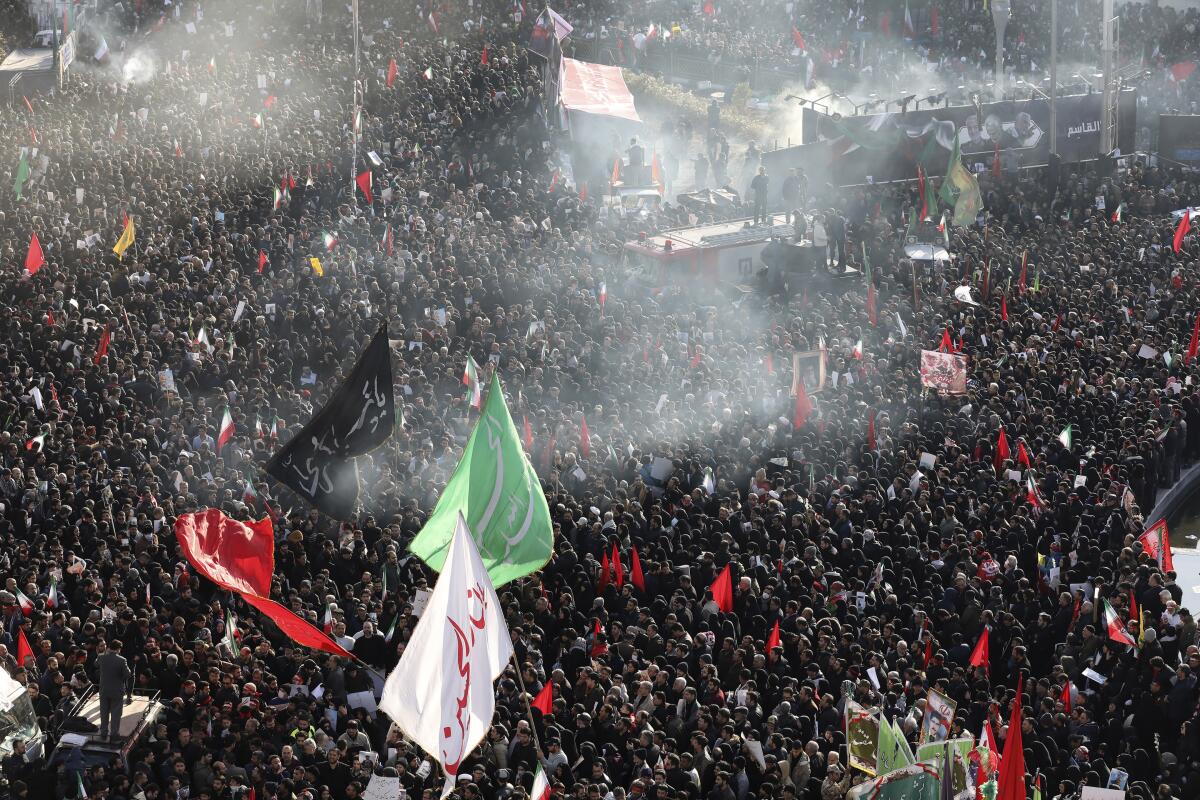
Markets reacted Monday to the tensions, sending international benchmark Brent crude oil above $70 a barrel for part of the day and gold to a seven-year high. The Middle East remains a crucial source of oil, and Iran in the past has threatened the Strait of Hormuz, the narrow mouth of the Persian Gulf through which 20% of all oil traded worldwide passes.
NATO Secretary-General Jens Stoltenberg, chairing emergency talks with the alliance’s ambassadors in Brussels, called for “restraint and de-escalation,” adding: “A new conflict would be in no one’s interest.”
Ghaani, a longtime Suleimani deputy, has taken over as the head of the Revolutionary Guard’s Quds, or Jerusalem, Force, answerable only to Khamenei. Ghaani has been sanctioned by the U.S. since 2012 for his work funding its global operations, including its work with proxies in Iraq, Lebanon and Yemen.
Those proxies probably will be involved in any operation targeting U.S. interests in the Middle East or elsewhere.
Already, the U.S. Embassy in Saudi Arabia warned Americans “of the heightened risk of missile and drone attacks.” In Lebanon, the leader of the Iran-backed militant group Hezbollah said Suleimani’s killing made U.S. military bases, warships and service members across the region fair game for attacks.
More to Read
Sign up for Essential California
The most important California stories and recommendations in your inbox every morning.
You may occasionally receive promotional content from the Los Angeles Times.
